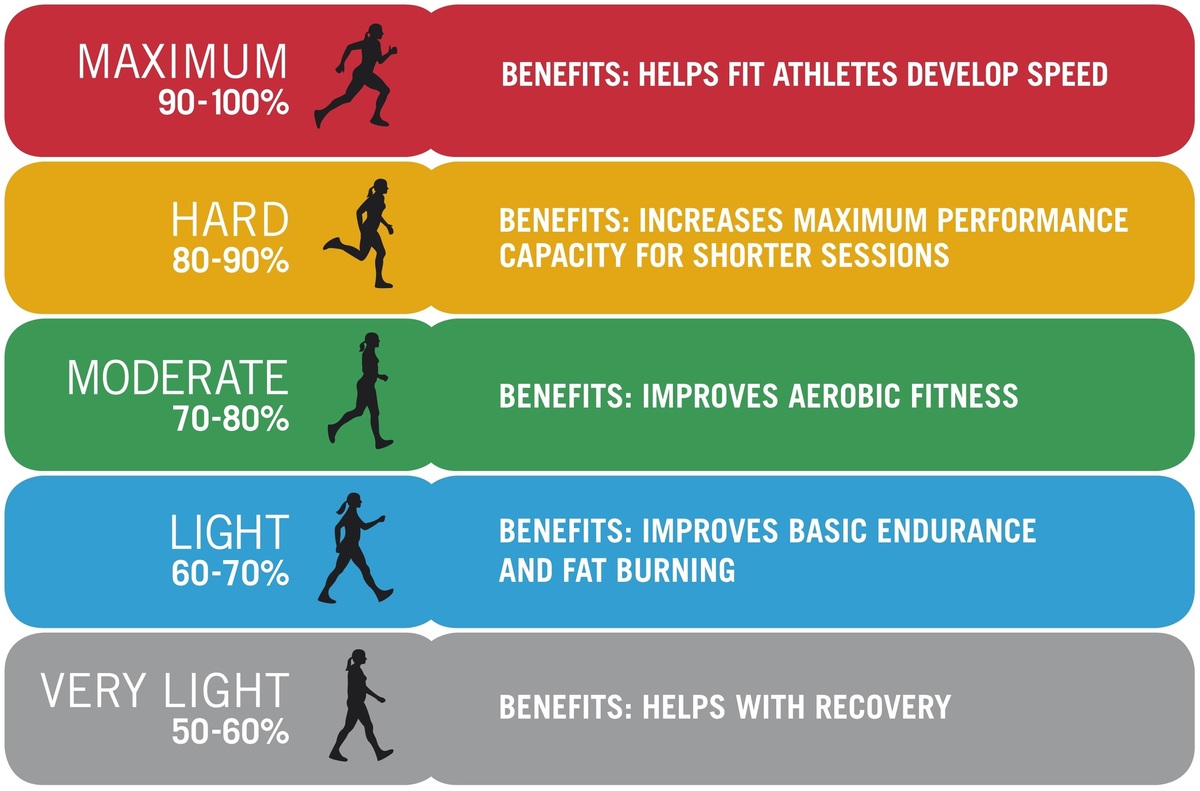But in order to really make your workouts effective, you need to pay attention to your heart.
Or, more specifically, your heart rate. The heart responds to exercise like any other muscle in the body: just as lifting weights can make the biceps muscle bigger and stronger, exercising the heart will make it stronger and more efficient. In the past, you may have simply counted your pulse, but that method isn't accurate enough. It requires you to slow down your exercise activity, which causes your heart rate to immediately drop. By wearing a heart rate monitor during your workout, you get immediate, continuous, accurate feedback.
A simple strap goes around your chest, and a watch on your wrist displays your heart rate in beats per minute.
Your Fat-Burning Zone and Weight Loss
While on your choice of a treadmill, elliptical or stationary bike, you wear a heart rate monitor and a portable device called a metabolic analyzer, which takes samples of your breath and measures how much oxygen you consume and how much carbon dioxide you expel and as you work at incrementally more challenging workloads.
Your exercise physiologist will stop the test once you have had enough—ideally when you are at 90 percent to 95 percent of your maximum effort. The test also measures your VO2 maximum, your anaerobic threshold and how many calories you burn at any given heart rate. Cardiovascular Stress Test: Your cardiologist usually performs this test when she wants to determine whether your heart can safely tolerate aerobic exercise.
Twelve electrodes are placed in specific positions on your chest.
Fat-burning zone heart rate chart
You then exercise while your doctor watches the electrocardiogram EKG , which traces how your heart beats, and takes your blood pressure every two minutes. The test also tracks your heart rate, which your physician will use to estimate your maximum heart rate, and then determine your THR.
This test is typically performed on men over 45 and women over 55 who have never had a stress test or are risk for cardiovascular disease or heart attack. Using Your Target Heart Rate A portion of your workout—usually your warm-up and cool-down—should be spent below your THR, or at about 50 to 65 percent of your maximum heart rate. And, you guessed it: Part of your workout should be spent in your target heart rate zone, or about 70 percent to 85 percent of your maximum heart rate.
- What Exactly Is The Fat-Burning Zone?.
- how to measure food portions to lose weight;
- does lamotrigine cause weight gain or weight loss;
- What is Fat Burning Zone & How to Calculate Your Rate.
Your exercise physiologist can help you determine how long to spend in each range in your various workouts, depending on your fitness level and goals. Aim to be at your THR for at least 15 to 20 minutes workout time, and ideally 35 to 45 minutes. If you find it challenging to reach that number at first, give yourself points for exercising and remember that, with time, your stamina will improve.
- cant lose body fat percent;
- Fat Burning HR Zone | Target Heart Rate to Lose Weight? | WHOOP.
- The link between heart rate and fat loss!
- Your Desired Percent Effort!
You have probably noticed that some of the cardio machines at your gym are equipped with hand sensors that you can grip tightly for a heart rate measurement. You can use them, but just keep in mind that their readings tend to be inaccurate. Before you begin any exercise program, discuss it with your physician.
It will lower your heart rate whether you are at rest or exercising, which means that your maximum heart rate and target heart rate zone will be significantly lower than charts will predict it to be.
Related Posts
Do not try to achieve chart predicted heart rates. More is not necessarily better. If your workout feels uncomfortably strenuous, regardless of your heart rate, slow down.

Finish out your workout with a brief cool down. Gradually decelerate to an easy pace, until your breathing rate has slowed to near normal. End with a few minutes of gentle stretching to keep muscles limber.
Heart Rate Training for Weight Loss - Spinning®
Calculating Your Target Heart Rate. Here are the tests your health professional might use to help determine your unique number: Submaximal Exercise Test: You put on a heart rate monitor and begin exercising on your preferred cardio machine, like a treadmill, elliptical or stationary bike. Remember… Before you begin any exercise program, discuss it with your physician.